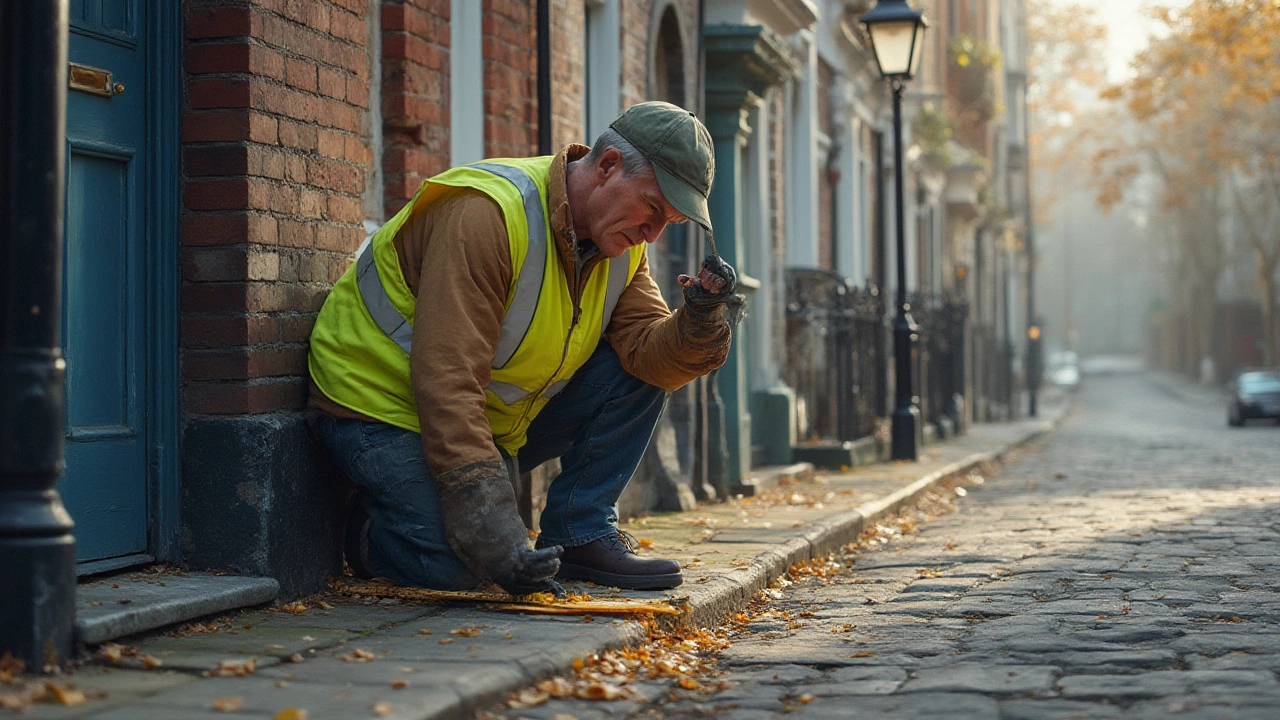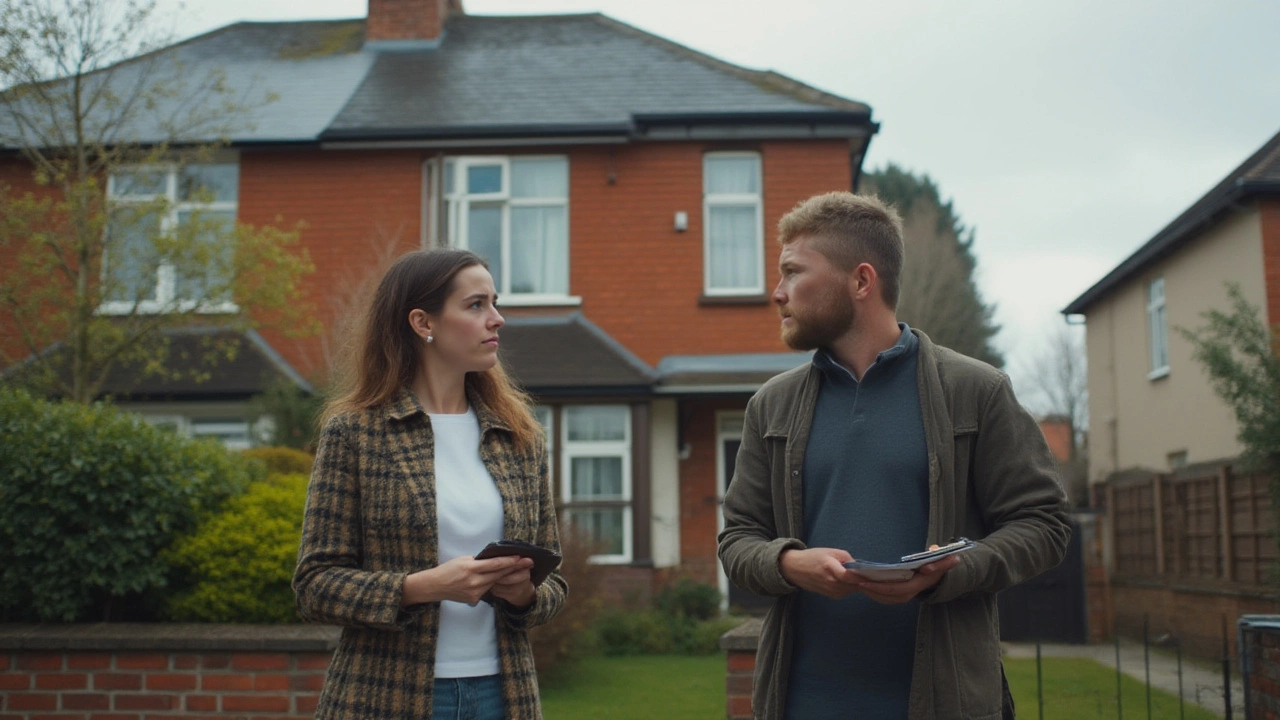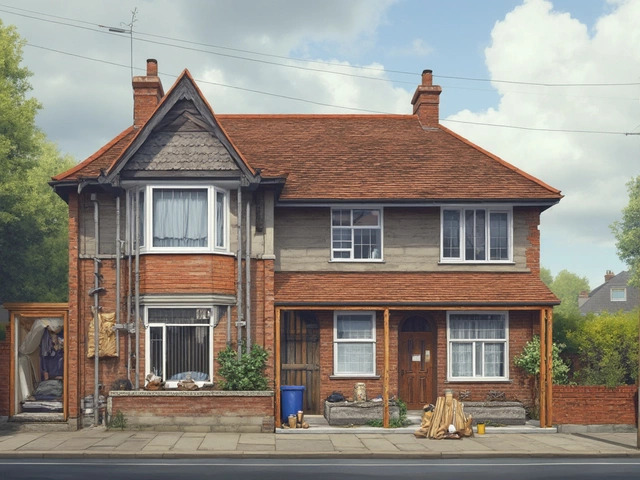Ever stood in a house, maybe the one you’ve dreamed of owning, and felt that tiny stab of worry because the doors don't shut? Or you spot mysterious cracks snaking across the walls, daring you to look away? Foundation problems aren’t just about the house settling. They can tank your investment—and your peace of mind. So, when do you stop trying to fix things and just walk away?
Understanding Foundation Problems: What’s Normal vs. What’s Scary?
Not every crack means the house is doomed. Some cracks are just cosmetic—hairline splits happen as a house settles, especially in Bristol’s mix of old and new homes. If you see cracks thinner than 3mm (about the thickness of your credit card), chances are it’s nothing dramatic. But when cracks grow wider, zig-zag over doors and windows, or you notice windows sticking and floors sloping, it’s different. Root cause matters: sometimes it’s just age, but sometimes it’s poor drainage, bad soil, or—maybe worst of all—shoddy construction.
In the UK, around 20% of homes develop non-structural cracks. But according to the Institution of Structural Engineers, severe structural issues are rare—less than 5% of cases make it to full underpinning or demolition. Still, in those unlucky cases, the costs (and stress) climb fast. You can check out government guidance on movement and subsidence, but a good rule of thumb? If you see doors and windows out of alignment in more than one area, or gaps forming between the skirting boards and floor, it’s time to take notice. Uneven floors can signal uneven settling under the house, and if you lay a marble on the floor and it rolls to one side, don’t shrug it off.
Let’s bust a myth: a fresh paint job isn’t always good news. Sometimes, sellers try to hide serious cracks with filler and paint. If the décor looks oddly new in just one room—or only along the ceiling corners—be suspicious. Another sneaky fact: UK mortgage lenders can refuse loans if a surveyor flags major foundation issues, so always get a qualified RICS surveyor to take a look, even if it feels like overkill. It might save you tens of thousands of pounds down the line.
Common Foundation Repairs: Costs, Risks, and Reality Checks
The word ‘foundation’ scares people because it means the bones of your house are at risk. And yes, repairs can be expensive. Typical patch-up jobs like filling cracks or tweaking windowsills might cost a few hundred pounds if you do it yourself, but serious fixes? Underpinning, for instance, can run £10,000 to £50,000 or more, depending on location, house size, and what’s under your feet. In Bristol, the clay-heavy soils in some areas make homes more vulnerable after dry summers—and that can make repairs even trickier and pricier.
Here’s how some typical foundation solutions line up on cost and invasiveness:
| Repair | Average Cost (UK, 2025) | Timescale | Risks/Downsides |
|---|---|---|---|
| Crack injection (Resin/Epoxy) | £500-£2,000 | 1-2 days | Fixes small cracks only, doesn’t treat underlying causes |
| Underpinning (Traditional/Resin) | £10,000-£50,000 | 3-12 weeks | Disruptive, very expensive, property value may drop short-term |
| Drainage improvements | £1,000-£5,000 | 1 week | Only helps if water management is cause |
| Pier and beam reinforcement | £5,000-£25,000 | 2-6 weeks | Limited to certain property types |
And just to add: not all insurance will cover foundation problems, especially if it’s linked to clay soil shrinkage or long-term neglect. Always check before you buy. In the last few years, insurance premiums have also jumped for homes with documented foundation claims, which can make the property harder to sell later if you do fix things.
But here’s something a lot of people miss: even a successful repair doesn’t erase the house’s history. Thanks to searchable property reports, prospective buyers (and their agents) will know if the home needed underpinning. That could knock 10-20% off your resale price, even if everything’s stable now. It really does pay to do the maths up front before plunging into costly fixes.

Red Flags: When You Should Seriously Consider Walking Away
Let’s get blunt. If you’re seeing foundation issues, pulling back isn’t just acceptable—it’s smart. Here’s when you owe it to yourself (and your wallet) to rethink the whole deal:
- You’re seeing wide, recurring cracks that come back after repair (especially around corners and lintels).
- Your structural engineer estimates £20,000+ in repairs, and the seller won’t negotiate on price.
- The survey shows clear movement in more than one part of the property—think walls separating from floors, bricks out of alignment, or even visible gaps at window or door frames.
- The house has been underpinned before, but there’s new movement—this means the original repair didn’t solve the issue, and that’s usually a permanent black mark.
- Mold and moisture are present—long term water problems are a nightmare to reverse, and if combined with foundation trouble, can mean the rot goes deep into joists and beams.
- The area has a history of subsidence or poorly compacted ground (in Bristol, certain post-war estates are notorious for this—check council records).
- Local property prices are sluggish, making it unlikely you’ll ever recover repair costs if you sell.
Sawyer, my kid, actually popped a marble on a neighbor’s sloping kitchen floor once—watched it race across the room like it was in a pinball machine. Fun for five minutes, but living with that tilt would turn any floor mop into a CrossFit workout. If the property leaves you joking about "creative gravity," that’s a solid sign it’s not worth the risk.
One overlooked detail: foundation repairs nearly always need a Building Regulations sign-off, and if you buy a home without this paperwork, you’ll struggle to insure or sell it in the future. If the seller is cagey about paperwork or survey access, what else are they hiding?
The true cost isn’t just money—it’s stress. Endless dust, lost weeks to disruption, arguing with tradespeople, and that nervous feeling every time it rains. That’s the real toll. If you’re already picturing sleepless nights, trust your gut—it probably knows the smart move.
Practical Checklist: Steps Before Making a Final Decision
So, there’s hope yet. If the house otherwise ticks all your boxes, here’s how you can reduce risk and make an informed call rather than just bailing.
- Bring in an independent structural engineer—don’t rely solely on the seller’s surveyor, ever. Get a detailed report with cost estimates and repair timelines.
- Ask for a full history—previous surveys, repair invoices, and official building regs approvals. No paperwork? Walk.
- Request insurance quotes from multiple providers for foundation problems. Some specialized insurers cover historic issues at a premium. Get cover notes in writing before you commit.
- Get tough with negotiations. Use your engineer’s report as leverage for price reductions or insist the seller completes repairs before completion—with paperwork, not promises.
- Check recent property sales in the area (Land Registry, Rightmove sold prices) to see how foundation issues impact value. Compare adjusted property prices to your expected cost/benefit.
- If in doubt—don’t let emotion win. There’s always another house, and nothing drains savings and sanity like a home with bad bones.
The best advice came from a builder friend: “If the house feels like a gamble, it probably is. Houses should be solid, not hopeful.” Don’t let estate agent FOMO (“fear of missing out”) push you into ignoring cracks you can see with your own eyes.
In the end, while a few foundation issues can be handled—and with the right survey and planning, you might even bag a bargain—it’s the big, unresolved problems that deserve a hard pass. Save your sanity (and your back). Sometimes walking away is the bravest, and smartest, choice you can make.





